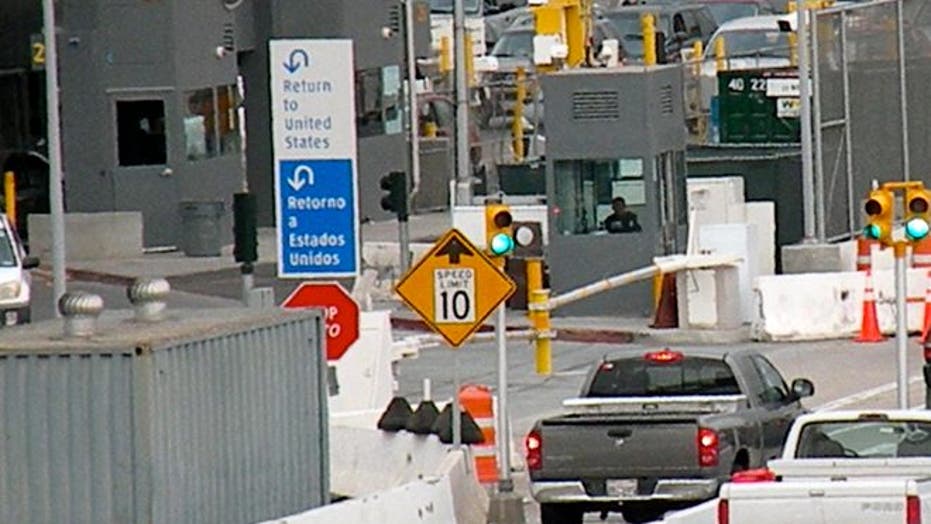The San Ysidro border crossing is approximately 13 miles south of downtown San Diego. It’s the busiest border crossing in the world.
On March 31, Andrew Tahmooressi, a decorated United States Marine who served two tours in Afghanistan, made the mistake of taking one bad turn – and the chain reaction to that turn has set off an international furor.
According to Tahmooressi’s mother, Jill, earlier that day her son crossed into Tijuana, Mexico, on foot, leaving his car parked on the California side of the border. After dinner with friends, he walked back to the U.S. at about 10:30 p.m. He got into his car and entered the ramp he believed would take him onto the I-5 freeway leading north back to San Diego.
What happened next has become a sore point in diplomatic relations. After crossing the San Ysidro checkpoint into Mexico, Tahmooressi was stopped by law enforcement officials there and charged with possession of three firearms: a 12-gauge shotgun, a .45 caliber pistol, an AR-15 and 400 pieces of ammunition. All were legally registered in the U.S.
Tahmooressi’s mother told Fox News Latino that her son keeps a collection of guns because it makes him feel “prepared.”
“Andrew was in a crisis point with his [post-traumatic stress disorder] when he moved out to San Diego. He was at the peak of his PTSD with a symptom called hyper-vigilance,” she said. Hyper-vigilance is a persistent sense of insecurity and a preoccupation with unknown threats, and it manifests itself with the person constantly watching and scanning his or her surroundings. "It’s all documented in his medical records."
Tahmooressi, his mother said, felt safer having the weaponry.
"He needed those weapons," she said. "It’s not uncommon, especially for those in the infantry."
Once on the freeway heading toward Mexico, cars are funneled into lanes separated by concrete dividers. The only U-turn back to the U.S, before crossing into Mexico, is in the far left lane. Tahmooressi was in the far right lane – blocked from the left by divided lanes. The Marine, who had been living with his parents in South Florida, had recently moved to San Diego to start his treatment for PTSD.
“Everything he owned was in that truck – along with the guns and ammo," Jill Tahmooressi said, adding that he had been struggling recently and had had his first group therapy session on the same day that he took the drive south.
Mexican border officials said they stopped Tahmooressi's truck because his pickup didn't have a front license plate, Alejandro Gonzalez Guilbot, head of Mexican customs in Tijuana, told the U-T San Diego newspaper.
Florida, where Tahmooressi had been living, is one of 19 states in the U.S. that do not require front license plates. California is not one of them.
The night Tahmooressi was arrested, his first call was to 911. He told the operator that he’d been stopped at the border and the officials were “trying to take my guns away.” He went on to ask, “They have a right to just take my guns away?” He also told the operator that he’d crossed accidentally and thought there was a turn-around point.
Alejandro Tamayo, a Mexican-American photojournalist, said that if you are not familiar with the area it's easy to get lost.
“I drive across the border every day for work. The concrete dividers have been there since 9/11, and once you pass the last U.S. exit, if you’re in the right lane, there is no way to get over to the far left lane to make a U-turn back to the U.S.," he said. "You have to go through to the border.”
Signs for the U-turn lane back to the U.S. are visible on the freeway. Tamayo says that about a month after Tahmooressi’s arrest, a huge lighted sign was added to make it more visible.
“My son was corralled into his lane. He was held captive essentially. He made a mistake, and there was no way for him to turn back," Jill Tahmooressi said.
Now the Marine, who has been in jail for almost two months, is mired in the Mexican legal system and it’s unclear when he'll be released.
"I’m as angry with the U.S. side as the Mexican authorities. Why can’t they work together?" Jill Tahmooressi asked. "Once it was proven that he was innocent and a military veteran, they should be releasing him.”

